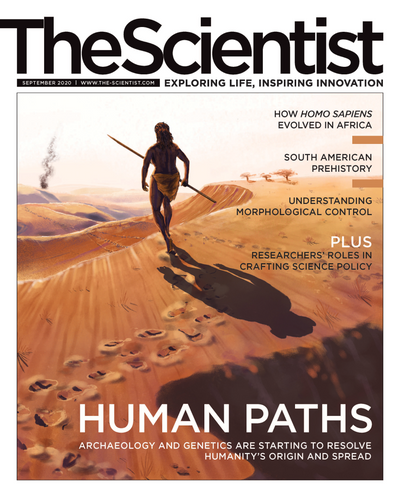ABOVE: Ibrahim Cissé (center) and colleagues COURTESY OF DENIS PAISTE, MIT MATERIALS RESEARCH LABORATORY
Ibrahim Cissé spent hours as a child taking apart and trying to rebuild electronics. Other times, he would reenact NASA space shuttle liftoffs, tipping a chair backward onto the floor and then climbing in, his knees and face pointed skyward. He’d shake the chair to simulate shooting through Earth’s atmosphere as he watched Hollywood movies about space exploration. Captivated by the US space program as well as the idea of the American dream he saw portrayed on the big screen, the Niger native begged his parents to allow him to come to the US for college. They agreed, and with the help of a host family in North Carolina, he moved across the Atlantic at age 17.
In 2002, Cissé transferred from community college to North Carolina Central University (NCCU), where he worked with...
To prepare for graduate school, Cissé spent the summer of 2003 at Princeton University in the lab of physicist Paul Chaikin, now at New York University. Chaikin asked Cissé a seemingly simple question: If you poured ellipsoidal objects into a jar, how densely would they pack? The question had stumped previous students and many researchers, but Cissé had an idea. He filled a jar of M&Ms with paint, waited for it to dry, then removed the M&Ms by hand and counted the spots on each piece of candy where there was a missing circle of paint. Each spot indicated contact with another piece of candy, revealing that each candy has, on average, about 10 neighbors, he and his colleagues reported in Science. That meant that ellipsoids packed more densely than perfect spheres, which have approximately six neighbors—a finding with implications for construction of ceramics, glass, and other materials. “It absolutely blew me away that this actually worked,” says Chaikin. “And it really was a discovery—it really was an influential paper that he was a coauthor on.”
Cissé wrapped up his bachelor’s degree in 2004, then joined the lab of biophysicist Taekjip “TJ” Ha at the University of Illinois Urbana-Champaign. Ha had recently developed a variation of fluorescence resonance energy transfer (FRET) imaging that worked on the level of individual molecules. Cissé put a twist on the technique, housing the molecules of interest inside lipid vesicles, which kept them in close proximity so that they continued to interact despite not having strong affinity for each other. The method allowed Cissé to watch the assembly and disassembly dynamics of two mostly complementary strands of DNA with a single mismatch somewhere in the string of nine base pairs.
After completing his PhD in 2009, Cissé accepted a position at École Normale Supérieure in Paris, where he developed a variation of a super-resolution microscopy technique called Photoactivated Localization Microscopy (PALM) to watch how molecules behaved over time in unfixed cells. The technique revealed that molecules of RNA polymerase II, a critical enzyme for transcription, cluster around genes that are being transcribed in cultured human cells. In 2014, Cissé started a lab at MIT, and following up on the PALM work, he and his team reported that the length of time clusters hung around transcribed genes correlated with the number of mRNAs produced in mouse cells. A later study showed that other molecules that regulate transcription clustered with RNA polymerases in mouse stem cells, and that some of the clusters lasted on the order of “tens of minutes,” Cissé says.
“There’s a nice intellectual continuity to [his work],” says Ha, now at Johns Hopkins University, noting that Cissé has continued to focus on imaging the interactions of individual molecules. “I’m really, really impressed.”
Interested in reading more?







